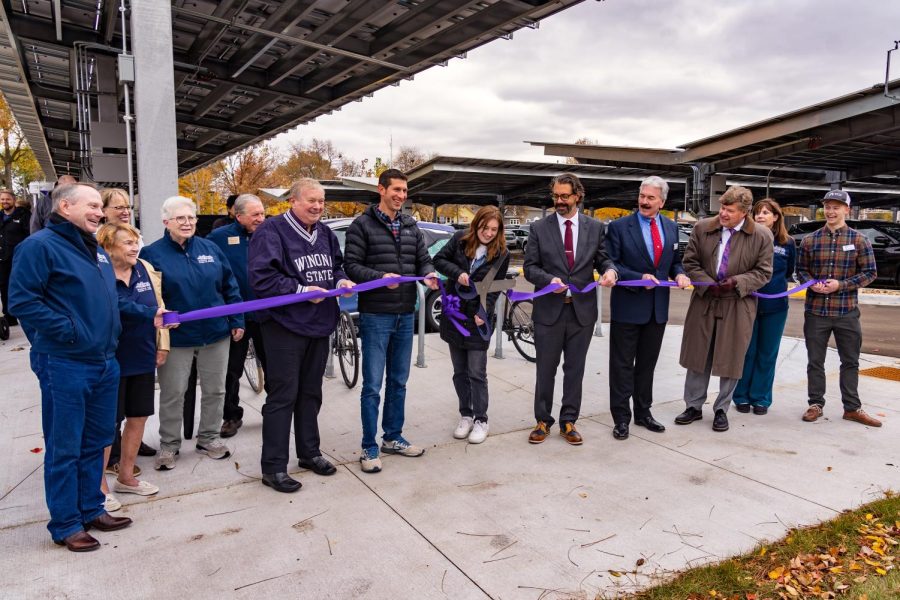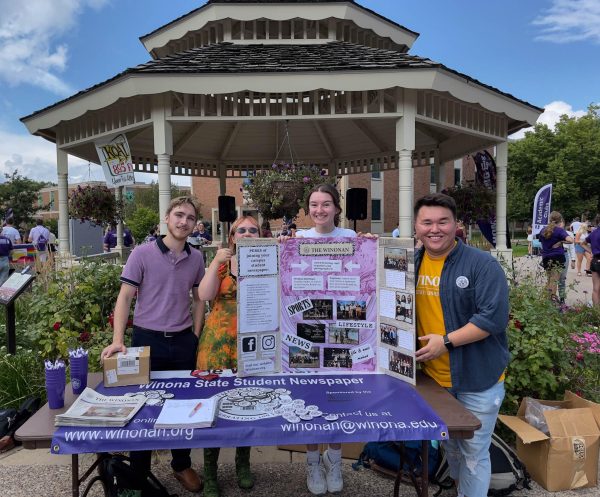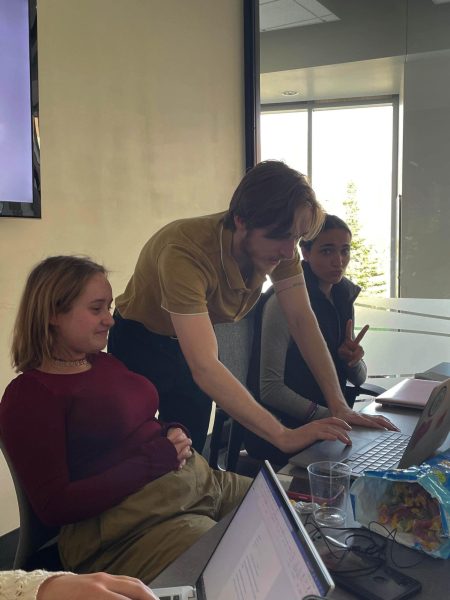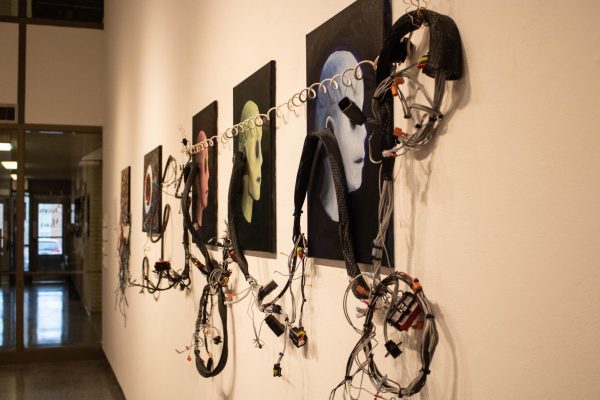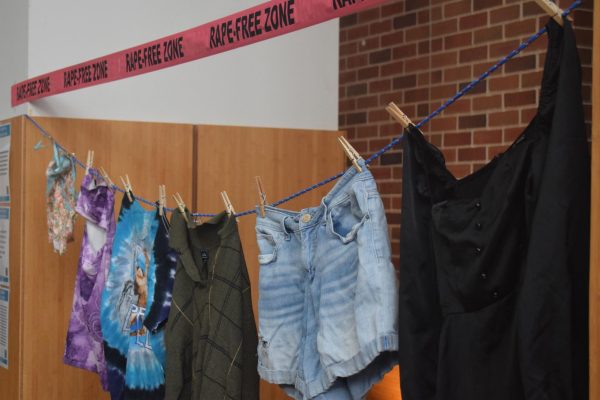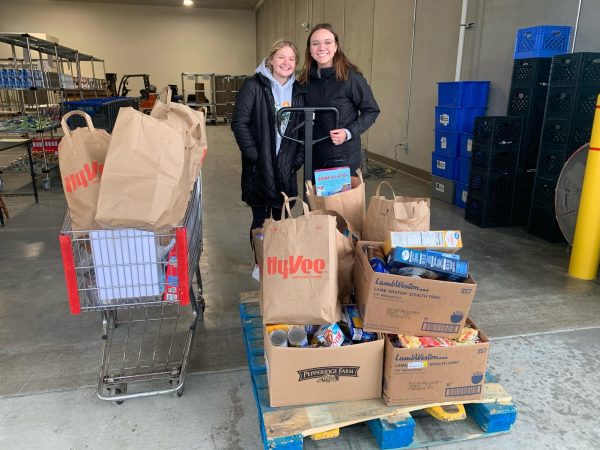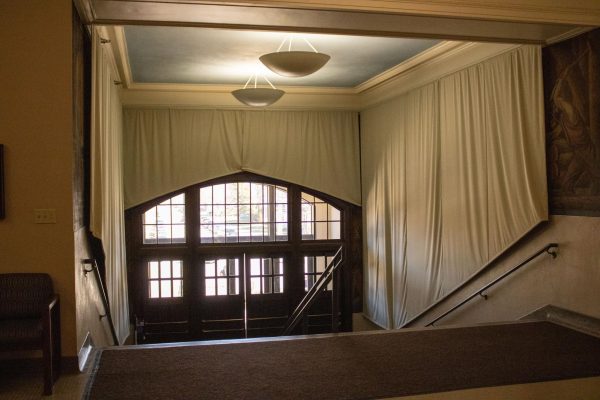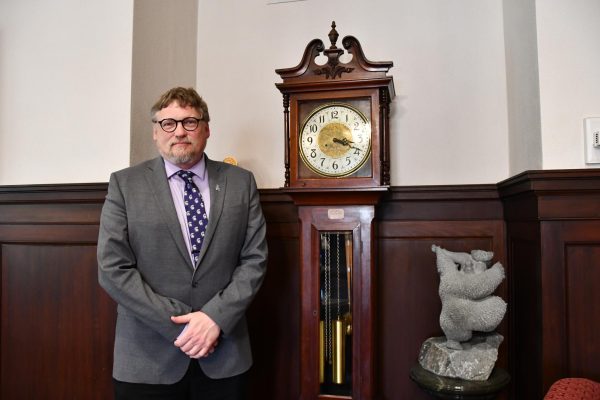Winona State celebrates completion of landmark LESS project
On Tuesday Oct. 25 a ceremonial ribbon-cutting event was held to commemorate the completion of the Leading Energy Savings and Sustainability (LESS) project. This project makes Winona State University a leader of sustainability in Minnesota. The LESS project cuts carbon emissions down by 25 percent each year. WSU Student Senate President Malorie Olson is shown cutting the ribbon.
November 2, 2022
Winona State University has reached completion of its Leading Energy Savings and Sustainability (LESS) project, making it the first university in the Minnesota State system to accomplish such a large project. With this $12 million project finally complete, questions like, “What is next?”, “What does this mean for the university?”, and “How does this benefit students?” still remain.
On the afternoon of Tuesday, Oct. 25, Winona State celebrated the completion of the LESS project with a ribbon-cutting ceremony outside of the Integrated Wellness Complex (IWC). Cutting the ribbon was Malorie Olson, Student Senate President.
The ribbon cutting took place in the IWC parking lot. Here, students can see the most noticeable aspect of the LESS project, the large array of solar panels.
Olson went on to talk about why the project is important to her and how it can be important to other students of her generation.
“I think it’s really important for people of our age to be like ‘this school really values sustainability […] this is a school I want to go to,’” Olson said.
Olson believes that climate change is a serious issue for her generation and that this project could possibly be a deciding factor for students who are considering attending Winona State over another institution. A university that values sustainability could be appealing to students who care about climate change.
“It’s awesome to go to a school that values something as important as that and is doing something huge about it,” Olson stated.
Another important benefit to students that Olson pointed out, is that students did not have to pay for any of it with their own money.
Olson commented that “We didn’t have to fork over any money, but we get to see the direct benefits of it.”
Olson also added that it “isn’t the case with a lot of projects that happen around campus, usually our money is tied to something.”
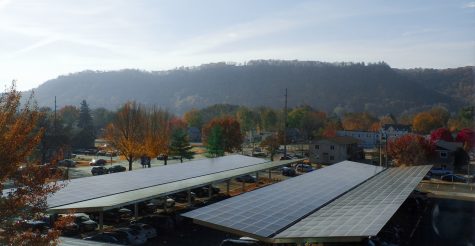
As for the future of the project and the outcomes it may have, Olson said “I wouldn’t be shocked if other universities follow in our footsteps.”
“We’re leading the way in just about every energy efficient way possible in the Minnesota State system,” Olson said, expressing her hope that Winona State will continue to be on the forefront of sustainability.
Olson encouraged students to learn more about the project, stating that “it’s a huge misconception that it’s just those solar panels.”
As student senate president, Olson said that their duty was to let students know that there is more to the project than just the solar panels.
Nathan Engstrom, Winona State’s Campus Sustainability & Planning Director, served as the project manager for the LESS project and gave a presentation to Olson and the student senate to offer more details about it.
Other aspects of the project included the installation of energy-saving lights, water-saving plumbing, HVAC automation controls, irrigation controls, pipe insulation, upgrades to pool controls and backup generators efficiency, building weatherproofing and destratification fans.
Engstrom attended the ribbon-cutting ceremony, and he commented that the project will help the university cut down on utility expenses by about 24 percent per year and carbon emissions by 25 percent per year.
Engstrom said that the project was made to “benefit the students” and to be “real, meaningful, and impactful.”
Engstrom also mentioned what he called “phase two” of the university’s future sustainability projects, although currently there are “no definite plans.”
James Goblirsch, Assistant Vice President for Facilities Management at Winona State, provided some more background on the project.
Goblirsch acted as the project executive for the LESS project and provided “overall direction and financial management.”
According to Goblirsch, the university started initial planning in 2018 and started work on the LESS project in early 2020.
Goblirsch said that the university “had a longstanding commitment to sustainability which was recognized at that time by our all-university sustainability committee.”
Goblirsch stated that one of the first steps for the LESS project was selecting McKinstry as their design-builder. McKinstry is a company that offers services in designing, building, and operating high-performance facilities.
Goblirsch also explained where the university obtained the funding for the project. He stated that the funding came from the Guaranteed Energy Savings Program managed by the Minnesota Department of Commerce. At the end of an eighteen-year lease period, Winona State will have full ownership of everything that was constructed.
As for savings, Goblirsch said that the university will save “approximately $658,000 annually,” with about $620,000 of this being used to pay off the lease costs.
Over the LESS project’s lifespan, it will save Winona State $26 million, which is over twice the amount of money it took to complete the project.
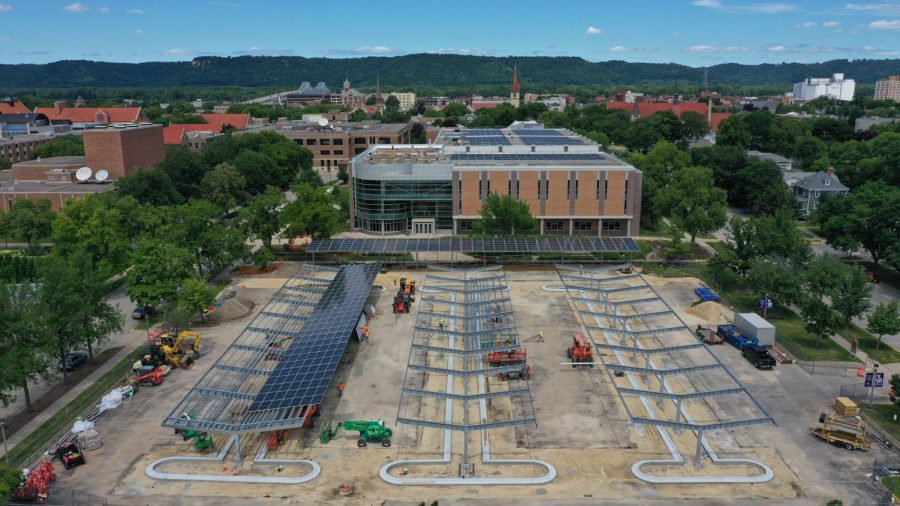
Goblirsch said the LESS project will benefit students and faculty of the university as well by providing a “cleaner, healthier place to live, learn, and work and renewed pride in Winona State.”
Goblirsch also stated that the LESS project is a “fabulous first step” towards the university’s “goal to be carbon neutral by 2050.”
To reach that goal, Goblirsch said they will need “everyone’s commitment and participation to maintain our momentum toward that goal.”
Other prominent figures spoke at the event on Tuesday such as Jeremy Miller from the Minnesota Senate, Gene Pelowski from the Minnesota House of Representatives, and Scott Sherman who is the mayor of Winona. Many of them focused on the fact that the LESS project came at no cost to students or taxpayers and how Winona State is the first university in the Minnesota State system to take on such a project.
Also speaking at the event was John Neville, the regional director for McKinstry. He created a “report card” for the LESS project and gave it straight A+’s across the board.
McKinstry said that it was the “first solar project on a Minnesota State campus” and the “largest state project.”
McKinstry also stated that construction for the project had gone well despite restrictions due to the COVID-19 pandemic. According to him, the project had a 100 percent safety record.
For more information on the LESS project, students can go to Winona State University’s website.























































